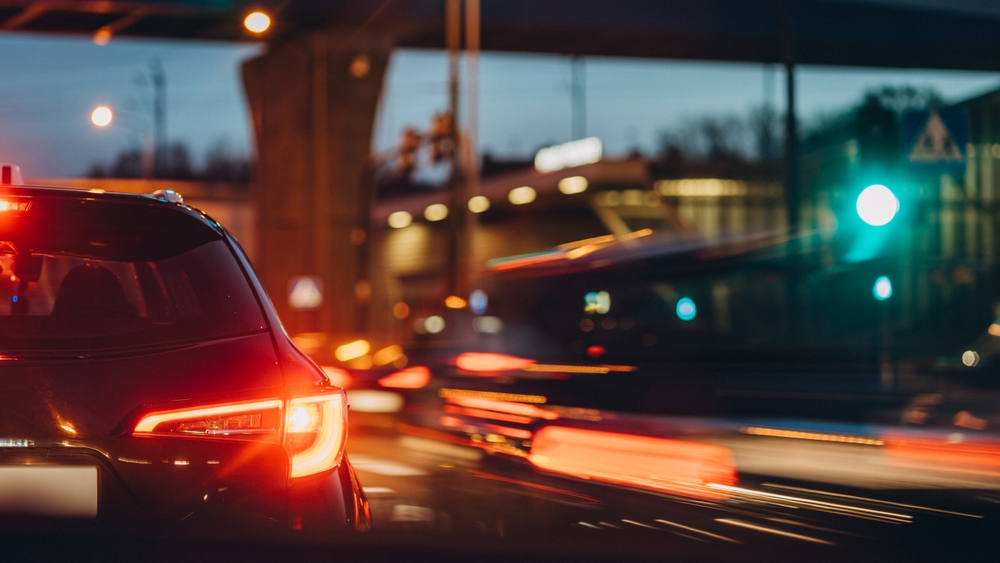
For many drivers, nighttime brings a whole new set of challenges. Headlights from oncoming cars, glare from wet roads, and dimly lit streets can make even a familiar route feel unfamiliar. If you’ve ever wondered why your vision seems so much worse at night, you’re not alone - this is a common concern that can have several causes.
Uncorrected Refractive Errors
If you have nearsightedness, farsightedness, or astigmatism that isn’t fully corrected with glasses or contacts, you may notice blurry or hazy vision at night when your eyes are already struggling in low light. Low-light conditions also make it harder for your eyes to focus, which can magnify the effects of even a mild prescription error. For many people, an updated prescription makes a noticeable difference in nighttime visibility.
Reduced Pupil Response with Age
As we get older, our pupils don’t dilate as effectively in low light. This limits the amount of light entering the eye, making it harder to see clearly in the dark. Even when your vision seems fine during the day, this reduced light intake at night can make it more difficult to spot hazards, read road signs, or see pedestrians. Age-related changes in the lens and retina can also affect contrast sensitivity, further impacting nighttime clarity.
Cataracts
Cataracts cause the eye’s natural lens to become cloudy, scattering light and creating glare or halos around headlights. At night, when your eyes are already working harder to adjust to low light, this light scatter can make bright lights appear starburst-like and reduce your ability to judge distances. Even in the early stages, cataracts can significantly impact your ability to drive confidently after dark.
Dry Eye Syndrome
Dry eyes can cause fluctuating vision and increase glare from lights, particularly when driving at night. Without enough moisture, the corneal surface becomes irregular, causing light to scatter instead of focusing properly. This can make oncoming headlights or streetlights seem brighter and more distracting than they should be. Cold air from car vents or heating systems can make dryness worse during nighttime drives.
Glaucoma or Other Eye Diseases
Some eye conditions affect peripheral vision, contrast sensitivity, or light adaptation, all of which are essential for safe nighttime driving. Glaucoma, for example, can reduce your side vision, making it harder to detect hazards coming from the edges of the road. Retinal conditions, such as macular degeneration, can also make it difficult to see in dim light or recover quickly from bright light exposure.
How to Improve Your Night Driving Vision
• Schedule a comprehensive eye exam to check for refractive errors, cataracts, and early signs of eye disease.
• Update your glasses or contact lens prescription to ensure optimal clarity.
• Consider anti-reflective lenses to reduce glare from headlights and streetlights.
• Treat underlying conditions such as dry eye or cataracts to improve vision comfort and sharpness.
Get the Clarity You Need for the Road Ahead
If driving at night feels increasingly difficult, it’s important not to ignore the problem. In many cases, poor night vision is linked to treatable conditions or the need for updated corrective lenses. Addressing the cause can make night driving safer, more comfortable, and less stressful.
Don’t let poor night vision put you or others at risk. Schedule your comprehensive eye exam with Patel Vision Group and get the clarity and confidence you need for driving after dark. Visit our office in Visalia, Redding, Roseville, Monterey, Salinas, Sacramento, Fresno, or Fair Oaks, California. Call (559) 739-8550, (530) 221-6557, (916) 788-2960, (831) 375-7755, (831) 443-5250, (916) 629-8033, (559) 538-1567, (916) 966-4700, or (559) 500-7685 to book your appointment today.








